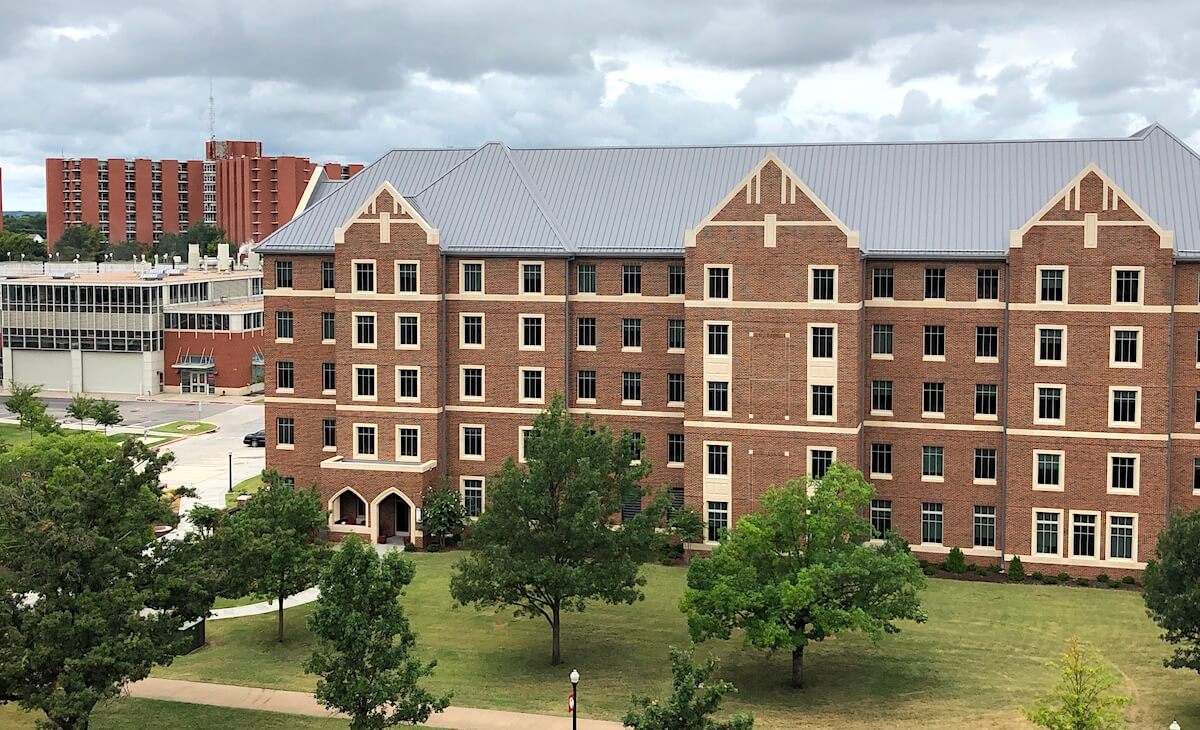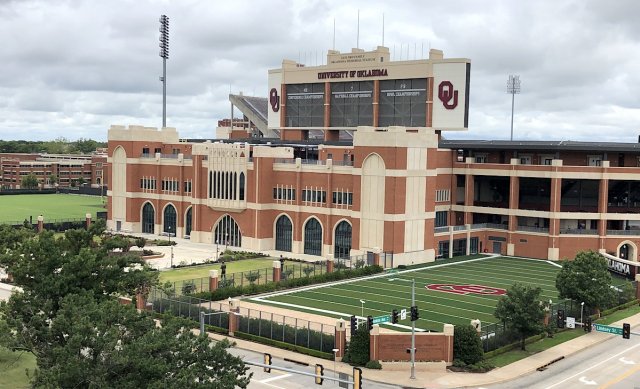After two consecutive days of meetings spent almost entirely in executive session, the OU Board of Regents approved the university’s Strategic Plan this afternoon following more than a year of development. University administrators also spoke on the fluidity of OU’s academic and athletic plans two weeks before thousands of students are set to enter on-campus housing, bringing new health and safety risks during the COVID-19 pandemic.
“This is such an emotional time. It really is,” OU President Joe Harroz told media Tuesday. “Everyone is anxious. Everyone is scared.”
Harroz said the final phase of faculty and staff returning to campus is slated for Monday, Aug. 3. On Tuesday, Aug. 11, about 5,000 students are scheduled to move into on-campus housing even as the state of Oklahoma continues to see record numbers of COVID-19 diagnoses. The pandemic caused OU — and most universities across the nation — to transition its spring 2020 semester to online instruction.
“Hopefully we can be in-person all semester (this fall), but that may not be possible. We are going to make every effort to do it,” Harroz said. “We are extending every option we can.”
Harroz said the campus housing move-in process has been revamped to include mandatory testing for students living on-campus this semester, with tests being completed before the students’ arrival.
Some students and faculty have still raised concerns over the plausibility of the university’s plan to bring students to campus. A petition started earlier in July asking university administrators to adjust portions of their return plan has more than 1,800 signatures. In response, OU released a staff flexibility form, which would allow any employee who felt they were at-risk to arrange a way to work from home.
According to interim Provost Jill Irvine, approximately 97 percent of accommodation forms have been approved.
Tuesday, Harroz added that the OU administration has reiterated to faculty and staff that even if they “don’t qualify legally” for an exemption to work from home, they can still make their circumstances known if they would prefer to teach or work online, where possible.
OU Board of Regents Chairman Gary Pierson echoed Harroz’s remarks during his closing comments at the meeting’s brief public portion.
“To Sooner nation, I ask that you be flexible — that you be understanding of the situation beyond just yourself. And last, I really sincerely — on behalf of the entire board — ask that you be respectful of our faculty and our staff,” Pierson said. “This is affecting them just as it’s affecting everybody else, and it’s hard on all of us. It’s beyond unprecedented, whatever that word is.”
At a July 20 virtual town hall, Harroz acknowledged that an all-online semester was still a realistic possibility.

Down, set … maybe hike?
The only space Sooners may be in closer quarters than the residential towers could be Gaylord Family Memorial Stadium if OU ultimately has a football season. Harroz said the university is prepared for “a number of scenarios” regarding whether football will be played, how many fans will be in attendance and if fans will be present at all.
“We are planning for a variety of scenarios. We are talking about whether [the stadium] could be 50 percent full. Could it be less than that? Obviously you’ve got to ask some other questions along with that,” Harroz said. “No firm decision has been made, but there are a lot of scenarios in place, and this is going to play itself out in the next couple of weeks.”
Harroz acknowledged that while missing out on a football season would have large scale financial ramifications on the university, his first concern would be the health and safety of students, players and fans.
“The first priority obviously is the health, safety and welfare of our students, faculty, staff and visitors,” Harroz said. “It is a big part of the budget. I can tell you we will not deviate from health as the first priority.”
Should a college football season prove untenable, that “big” part of the budget would translate to a potential net revenue shortfall of at least $25 million in the OU Athletics Department, according to The OU Daily.
The first game of the OU football season, against the Missouri State Bears, was moved up one week to Aug. 29 to allow “more schedule flexibility” in dealing with potential future issues resulting from the pandemic.
As of the latest round of coronavirus testing announced July 23, there are no active cases among Sooner football players. On July 27, the Missouri State athletic director reported 31 MSU student athletes tested positive for COVID-19, but added that not all 31 cases were active and “a majority” were not football players.
‘Monumental moment’: OU has a strategic plan
Harroz and other OU administrators had worked on the strategic plan for more than a year. During Tuesday’s brief public portion of the Board of Regents meeting, Harroz and regents Chairman Gary Pierson each noted the historic nature of the strategic plan, which only covers the Norman campus.
Harroz said it was the “first time in at least a generation” that OU had such a strategic plan in writing. The plan’s purpose is to offer a broad, guiding framework for the university’s mission and efforts.
“This is a truly monumental moment in the history of this university,” he said. “Every decision we make, every step we take will be made through the lens of this strategic plan. This plan represents the best of all of us, the best of our thinking.”
Posted on a series of OU webpages, the plan opens with a three-word purpose — “We change lives” — and lays out five “pillars” about how that purpose is achieved:
- Become a top-tier public research university;
- Prepare students for a life of success, meaning, service and positive impact;
- Make OU’s excellence affordable and attainable;
- Become a place of belonging and emotional growth for all students;
- Enrich and positively impact Oklahoma, the nation and the world through research and creative activity.
Each pillar then includes multiple “strategies,” which are broken down to describe a series of “tactics” for achieving those goals. The pillars listed above have been linked to their individual pages showing the strategies and tactics. The fourth pillar includes a focus on diversity and inclusion.
Harroz said the goal of achieving “a truly excellent university” was made more challenging owing to the coronavirus pandemic. But he also said it forced the 11-person strategic plan committee to acknowledge how the college education world is changing.
“As you’re thinking about your future. As you think of the next 7 to 10 years of the university, having COVID occur is further mind-focusing. It makes you think about what is changing and how you preserve the university in the era we are in today,” Harroz said. “This strategic plan proudly announces that we change lives. It sounds simply, but it is utterly profound. That’s what we do, and from that purpose everything else flows.”






















